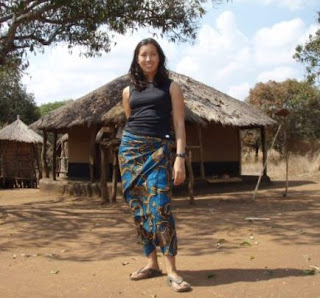Sixty percent of Malawian small holder farmers live under the poverty line. Many of these farmers are food insecure for up to 6 or 7 months of the year, meaning that they often go without eating or will only have one or two meals per day. Most farmers get by using income earned by labouring on the fields of others. As a result, many farmers have chronic labour shortages on their own farms at this, the peak period for farm work. They produce less of on their own land, and are sent deeper into a poverty cycle.
Irrigation projects are promoted in Malawi to increase dry season productivity. Under irrigation, farmers are able to grow high value crops for both sale and household consumption. The goal is for farmers to become food secure, have increased access to cash, and improved nutrition through a more diversified diet.
The NGO I’m working with here, Total Landcare (TLC), promotes small scale irrigation technologies. We deal mostly with treadle pump and stream diversion irrigation. Treadle pumps are little Stairmaster like contraptions which pump water from a well or river, and a stream diversion system diverts water from a stream by gravity into a hand dug canal. In both cases water is directed to a high point on a field where it flows by gravity through a series of channels to planting basins.
In my role as a Monitoring and Evaluation (M&E) Officer, I’m interested in exploring what is really happening on the ground. Are we having the results we expected and intended? Are there ways we can improve the impact we’re having? I recently spent some time in the field interviewing irrigation farmers on their work during the past irrigation season.
One such farmer was Grace Ulaya. She has a household of 5, and supports a total of 8 people. She started treadle pump irrigation last season, and grew maize, tomatoes, onions and beans. She sold half of her harvest, and kept the rest to feed her family. In the past, her family was food insecure for 5 months, and they covered this shortfall through labouring. Since starting irrigation with TLC in June of 2007, her family is now food secure. Her family has been able to further improve their livelihoods by using profits from irrigation to engage in other income generating activities; her husband buys household items from the capital city for sale in the rural areas around their home, and she has constructed a chicken coop and will soon start raising chickens for sale. Once they finish paying off the loan for the treadle pump issued to them by TLC, they will start purchasing other livestock, such as goats.
While Grace’s story is indeed one of success, there are ways that we can improve and adapt our irrigation program to further increase the impact that we are having. I am working to achieve this by improving the capacity of TLC’s M&E system.
Much of the work I’ve been involved with so far falls in two categories:
- Improving existing and developing new M&E tools (e.g. reporting mechanisms between field coordinators and head office, M&E database, survey templates, questionnaires)
- Conducting field work with the key goals of filling in information gaps and cross checking results, followed by reports on findings and presenting recommendations to management
The M&E team spent a week in the field to survey farmers on some elements of the previous irrigation season (which lasts from March until December). We gathered information on their sale of irrigated produce, details on the repayment of their loans with TLC (we distribute irrigation equipment on a loan basis), and general impacts they’ve experience in their livelihoods. We use a survey template to gather this information, but it goes beyond simple check boxes and yes no answers. We are sure to use many open ended questions and try to get to the root of how and why things are happening as they are. We are trying to fill in the gaps of information we currently get from the field, which tend to be all numbers, therefore adding to existing quantitative with qualitative data.
I have taken the information we gathered form the 153 farmers we visited and have presented them in a report which will be given to all management staff, and to field coordinators upon request. The information contained in this report will be used to guide some changes that we will be making to project strategy to improve our impact on the ground.
There are some interesting things coming up for me soon at work so I’ll be back in touch about these things soon. For now, I’m about to head to Zambia for an EWB retreat! So, I’ll be back in a little while!













